Vegan Egg Substitutes
Consider this your ultimate guide to vegan egg substitutes! Here you’ll find egg substitutes for sweet and savoury dishes, along with instructions on how to use them for best results.
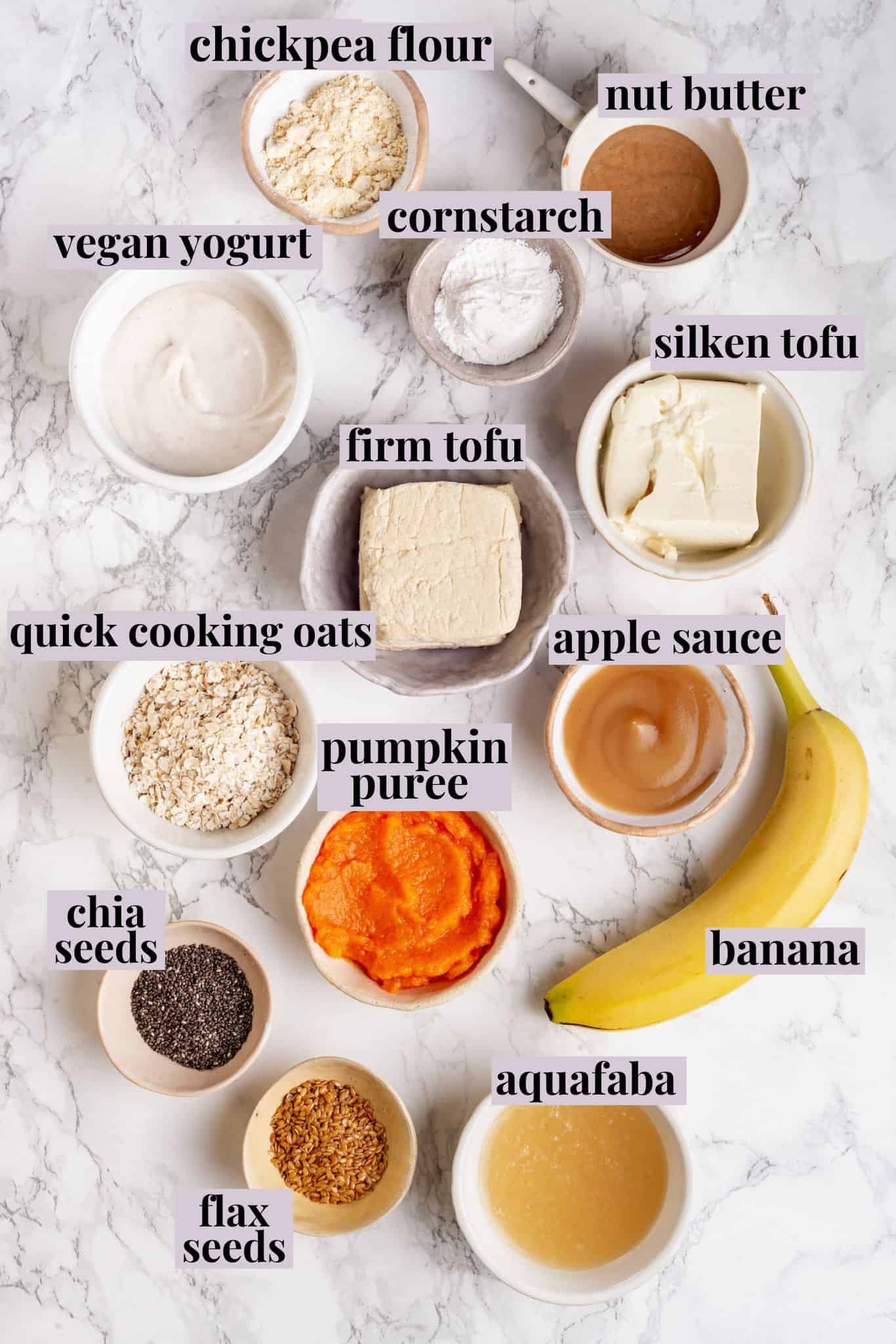
While replacing cheese and meat is easy when you go vegan, eggs can present a challenge. They’re not just there for flavour, after all—eggs do work in a recipe! They bind, create structure, thicken, and emulsify.
Because eggs do so many things in baking and cooking, it’s hard to find a single ingredient that replicates all of them, especially if you’re looking for something you already have in your kitchen. But the good news is that there are lots of options!
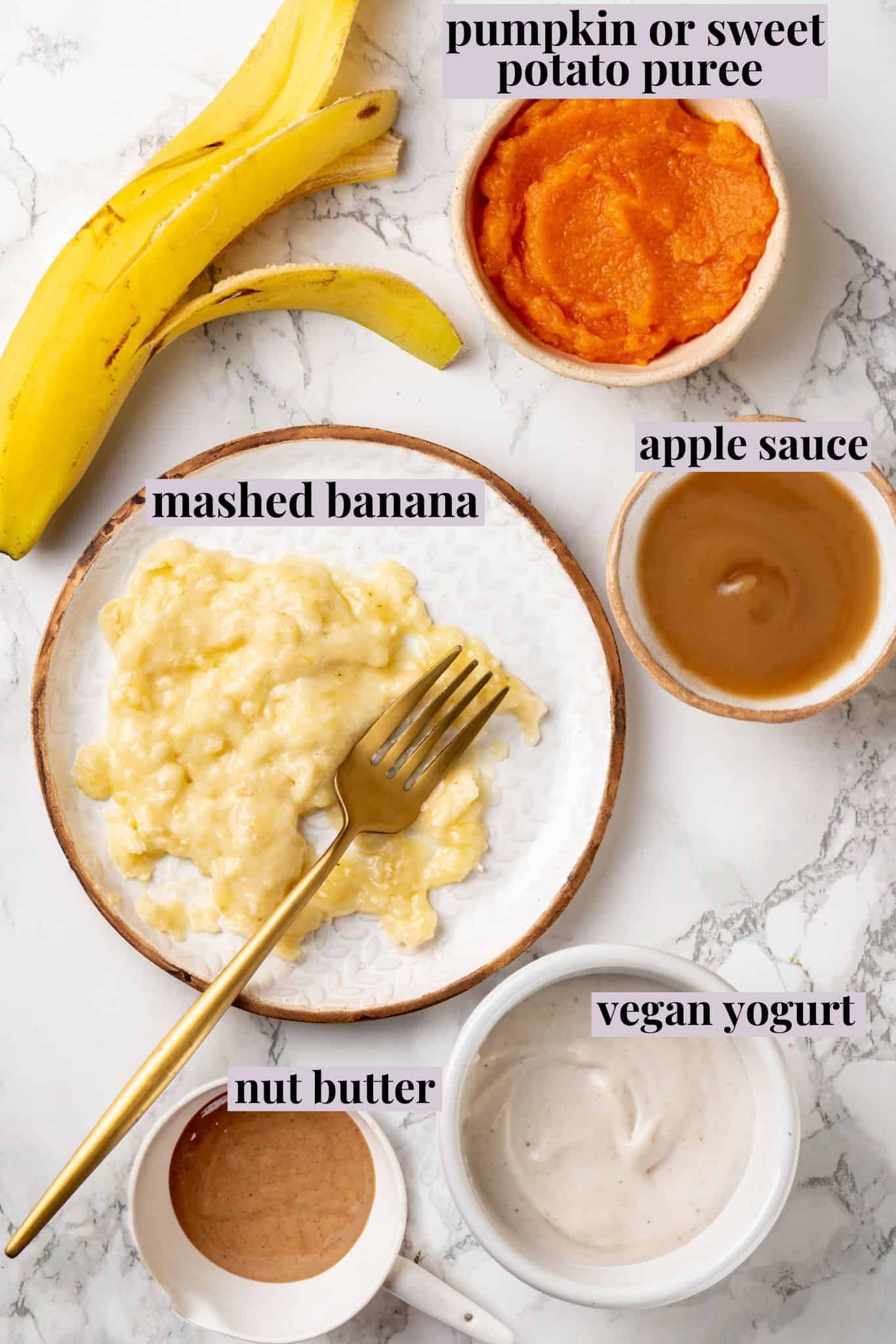
The Best Vegan Egg Substitutes for Muffins, Brownies, and Cakes
These egg substitutes help achieve a moist, tender crumb.
Bananas
Mashed ripe bananas are a great substitute for eggs in baked goods like cakes, muffins, and pancakes. They add moisture and help bind the ingredients together just like eggs do; ripe bananas will also add sweetness and banana flavour. Use banana as an egg substitute when you’re making banana and chocolate flavoured desserts.
- Why It Works: Bananas have a similar texture and binding properties as eggs, making them an easy replacement.
- How to Use It: Mash ripe bananas with a fork until smooth. Use 1/4 cup (75g) of mashed banana for every egg called for in the recipe. That’s about half of a medium banana.
Pumpkin or Sweet Potato Puree
Pumpkin puree and sweet potato puree are fantastic as a substitute for eggs in recipes that call for a lot of moisture, such as brownies and cakes, or in cookies where you want a chewy texture. (You can also use other winter squash purees, like butternut or acorn squash; canned pumpkin puree just happens to be most convenient!)
- Why It Works: Pumpkin puree adds moisture and creates a similar texture to eggs in baked goods.
- How to Use It: Use 1/4 cup (60g) of pumpkin or sweet potato puree for every egg called for in the recipe.
Applesauce
Like bananas, applesauce can also be used as a binder and for adding moisture to baked goods. Because it has a milder flavour, it’s a great choice for vanilla baked goods.
- Why It Works: Applesauce is high in pectin, which acts as a binding agent and helps create a similar texture as eggs in baked goods.
- How to Use It: Use 1/4 cup of applesauce for every egg called for in the recipe. Be sure to use unsweetened applesauce to avoid altering the flavour of your dish.
Vegan Yogurt
You can use vegan yogurt (or buttermilk) as egg substitutes in baked goods, giving them a moist, tender crumb. Use it in muffins, cakes, and cupcakes. You can also use vegan yogurt as a substitute for egg when dredging foods in breadcrumbs before baking or frying.
- Why They Work: Vegan yogurt adds moisture and helps bind ingredients together.
- How to Use Them: Use 3 tablespoons (46g) of vegan yogurt for every egg called for in the recipe.
Almond Butter
You can use almond butter (or other unsweetened nut butters, like peanut butter and cashew butter) as a binder in baking recipes that call for eggs, but they will add some nutty flavour to your baked goods, so keep that in mind!
- Why It Works: Almond butter has similar binding properties to eggs and adds protein to dishes.
- How to Use It: Use 3 tablespoons of almond butter for every egg called for in the recipe.
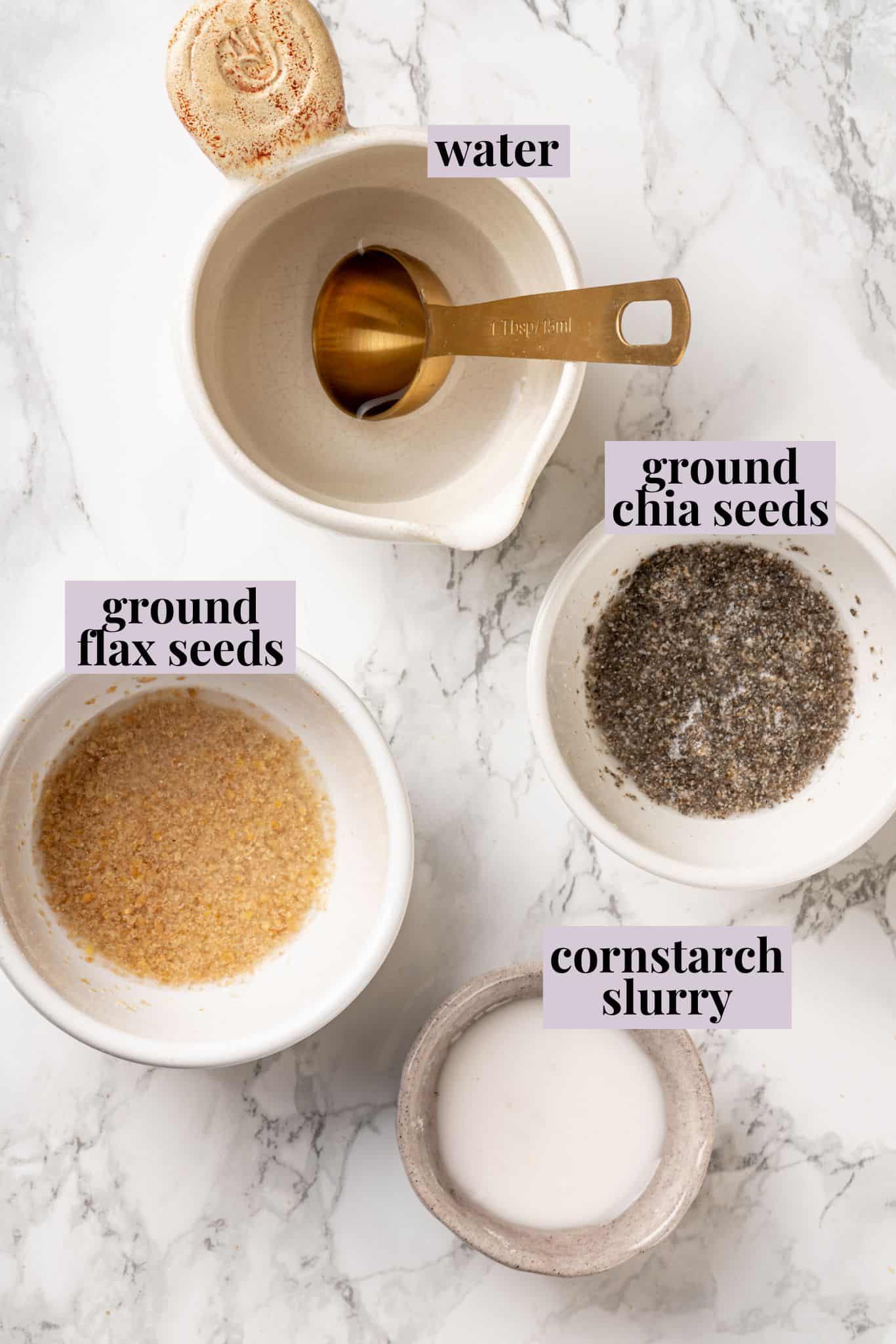
Best Vegan Egg Substitutes for Gluten-Free Baking and Cookies
All the above options won’t act as binders for the dough, but if you use regular baking flour you usually won’t need an additional binder. For gluten-free baking, a binder is a must. Don’t forget to add baking powder too, otherwise you will end up with a heavy, hard cake. (In addition to gluten-free treats, the following binders work well for cookies.)
Ground Chia and Flax Seeds
Ground flaxseeds or chia seeds mixed with water make an excellent substitute for eggs in recipes that require a lot of binding, such as veggie burgers or vegan meatloaf. You can also use flax egg as a replacement in gluten-free baking and cookies, as described above.
- Why It Works: When mixed with water, flaxseeds and chia seeds form a gel-like substance that provides structure and holds ingredients together.
- How to Use It: Mix 1 tablespoon of ground flaxseeds (8g) with 3 tablespoons of water for every egg called for in the recipe, or use 1 tablespoon of ground chia (14g) with 3 tablespoons of water. Let the mixture sit for a few minutes to thicken before adding it to your batter or mixture.
Arrowroot, Tapioca, Corn, or Potato Starch
Starches can be used as a thickening agent in place of eggs in sauces, soups, puddings, and custards in addition to baking. Haupia is an example of how a starch can result in a thick, creamy dish.
- Why It Works: Starches act as thickeners in recipes.
- How to Use It: Mix 1 tablespoon of starch (10g) with 3 tablespoons of water for every egg called for in the recipe. Add it to your dish and let it cook for a few minutes to thicken, similar to when you make a cornstarch slurry.
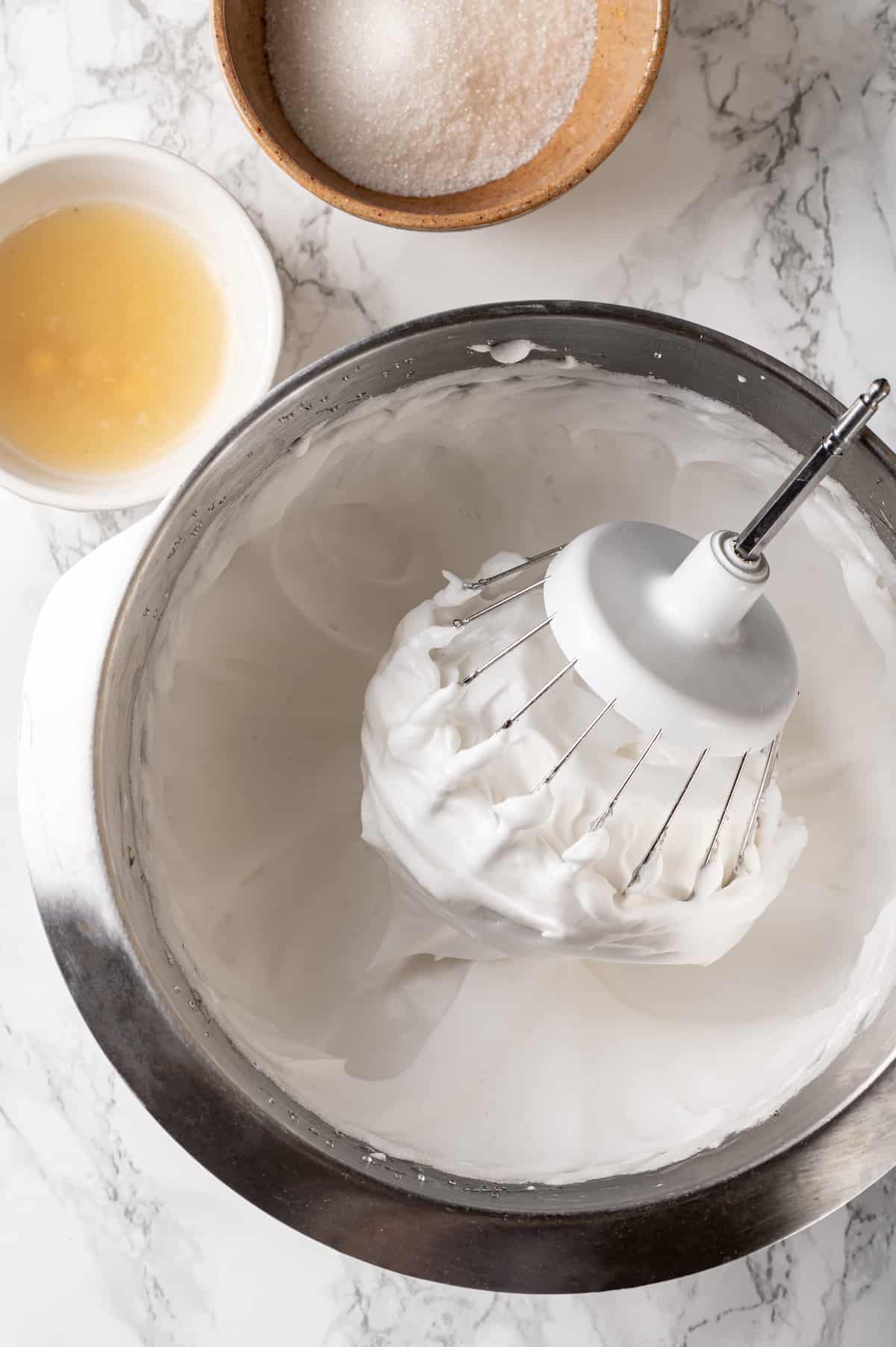
Best Egg Substitute for Vegan Meringue, Marshmallows, Soufflé, and Mousse
There’s only one option here and it’s fantastic!
Aquafaba
Aquafaba, the liquid from a can of chickpeas, has gained popularity as an egg substitute in recent years. It works well in recipes that require whipped eggs whites, such as meringues or macarons. Sometimes it’s too thin straight from the can, which can cause the meringue to fall. To avoid this you can reduce the liquid by boiling in a saucepan and then cool before using.

- Why It Works: The protein and starch in aquafaba create a foam-like texture when whipped, making it a perfect replacement for egg whites.
- How to Use It: Use 3 tablespoons of aquafaba (22g) for every egg or 2 tablespoons (15g) for every egg white called for in the recipe. Whip it with an electric mixer until stiff peaks form, then fold it into your batter or mixture.
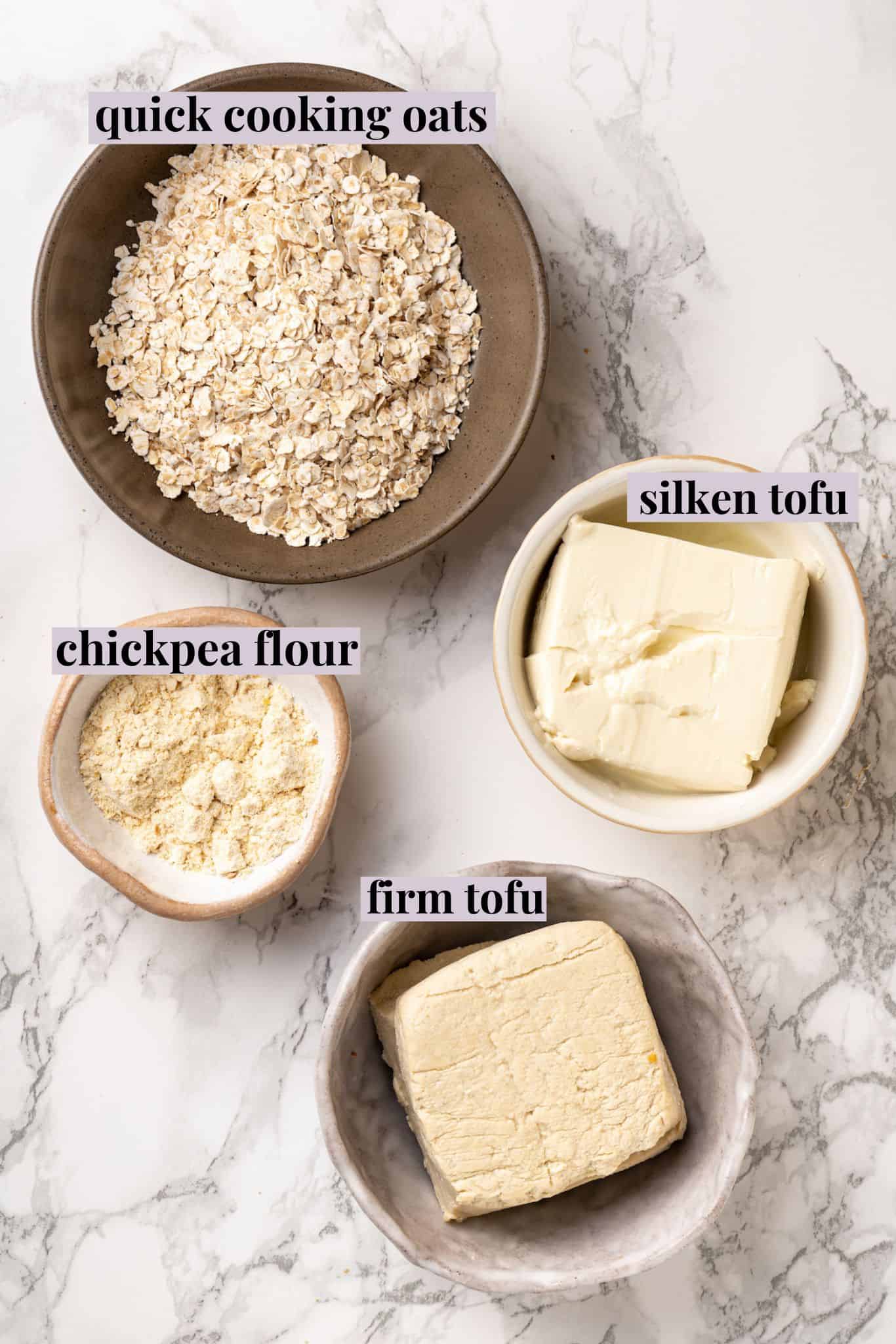
Best Vegan Egg Substitute for Savoury Recipes
In savoury recipes, you’ll need different properties from a vegan egg substitute—plus, you’ll want to avoid adding sweetness.
Quick Cooking Oats
This is a simple option that’s perfect for binding vegan burgers or meatballs. Because the oats will need to absorb some of the moisture from the recipe in order to activate, I recommended letting the mixture sit for 15 to 30 minutes before forming patties or balls.
- Why It Works: Quick cooking oats absorb moisture and act as binding agents without adding a distinct flavour to the dish.
- How to Use It: Use 3 tablespoons (30g) of quick cooking oats for every egg called for in a recipe.
Chickpea Flour
Chickpea flour is a simple way to make a delicious vegan egg scramble, but it’s also great as a batter for breading, and also for making omelets, frittatas, and fritters.
- Why It Works: When hydrated, chickpea flour has the consistency and colour of egg.
- How to Use It: Combine 2 tablespoons (18g) of chickpea flour with 3 tablespoons water for 1 egg.
Firm Tofu
Firm tofu is a great alternative in recipes that use eggs for a creamy texture, such as quiches and custards, but also for crumbling up into a tofu scramble. For a similar taste to egg, you can add kala namak salt.
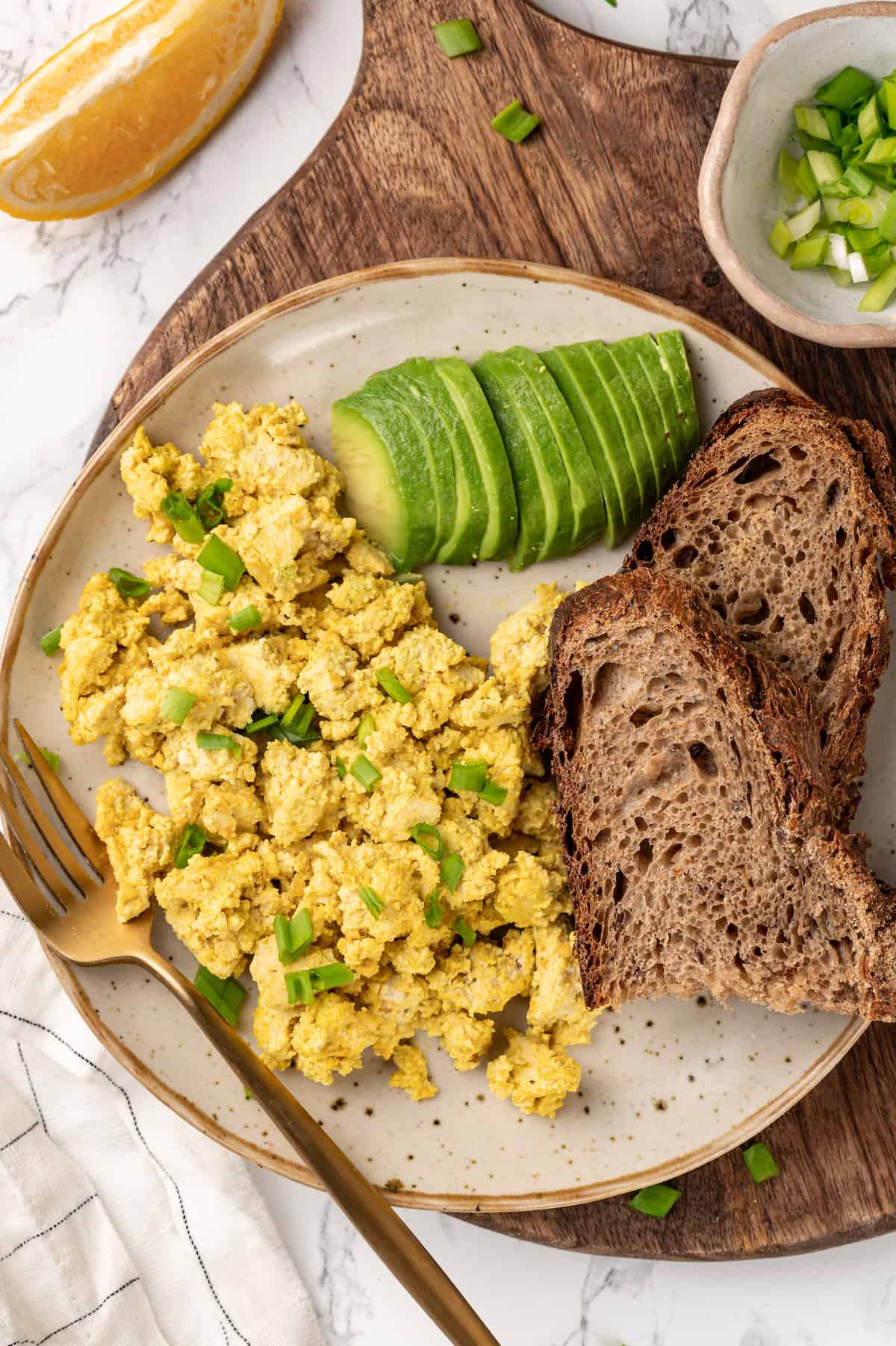
- Why It Works: Tofu has a similar texture to eggs and it’s also high in protein.
- How to Use It: For a quiche or frittata base, combine 1/4 cup of plant milk (60g) with 1 tablespoon (10g) of corn or tapioca starch with 10 ounces (300g) of firm tofu.
Silken Tofu
Silken tofu makes a creamy base for vegan mayonnaise. You can also use tofu as an egg replacement for baked goods, although it will make them more dense.
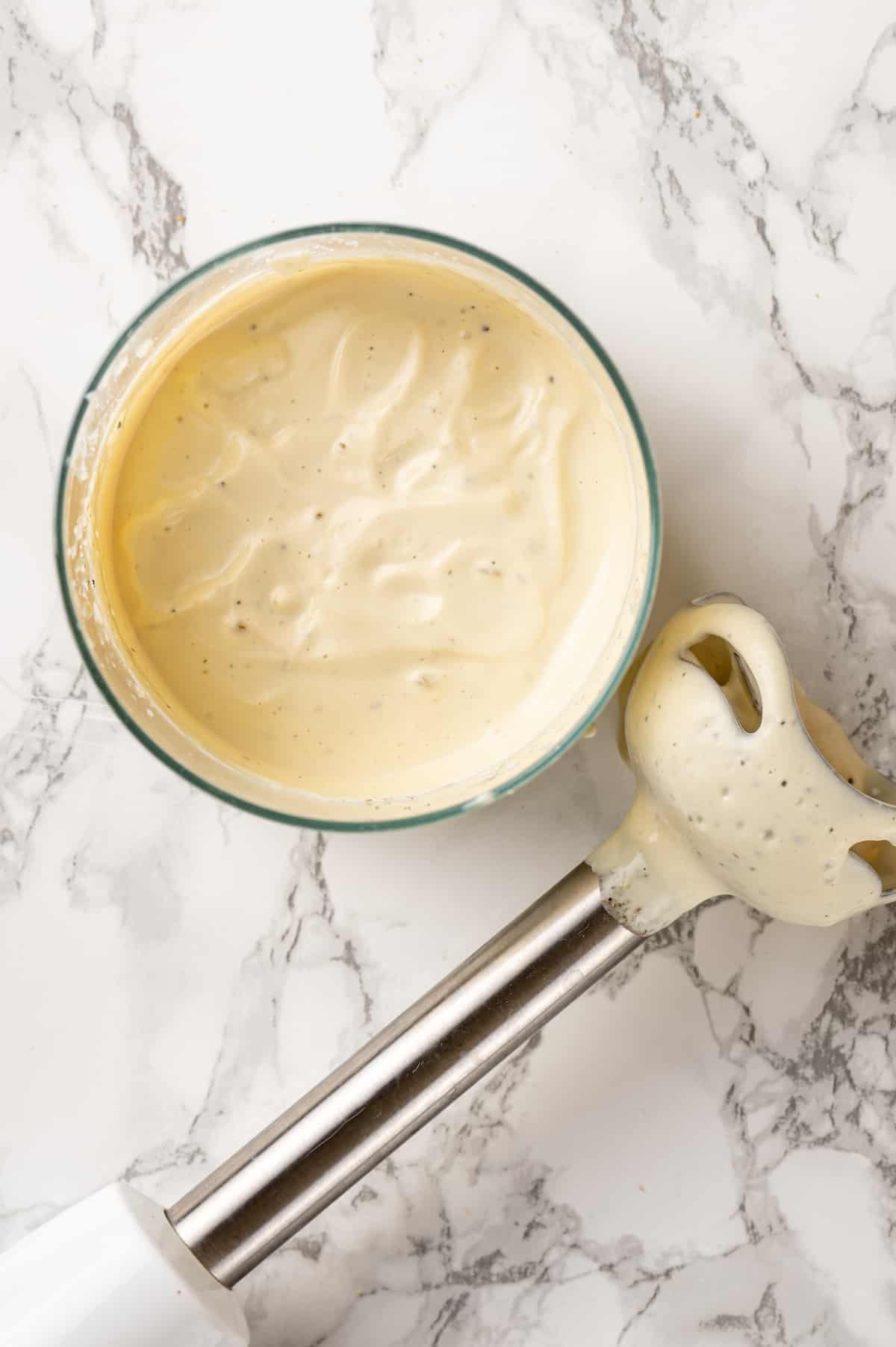
- Why It Works: It purees smooth and creamy just like mayo.
- How to Use It: Use 1/4 cup (56g) of pureed silken tofu for every egg called for in the recipe. Or, make the vegan mayonnaise recipe below.
A Few More Vegan Egg Replacers
Here are some other options in addition to the vegan egg replacers described above.
Kala Namak Salt
Kala namak salt, also known as black salt, can be used to add an eggy flavour to dishes without using eggs. If, for example, you’re making vegan quiche with tofu, the tofu will mimic the texture of the egg, while adding kala namak salt will make it taste eggy.
- Why It Works: Kala namak salt contains sulfur, which gives it a distinct eggy flavour.
- How to Use It: Sprinkle a small amount of kala namak salt on your dish to add an egg-like flavour. Use it sparingly, as it can be overpowering.
Vinegar and Baking Soda
This combination can be used as a leavening agent in place of eggs, giving your baked goods lift and light, airy texture, like in this red velvet cake. It works best in recipes that call for 1-2 eggs.
- Why It Works: When vinegar and baking soda are combined, they create a chemical reaction that produces carbon dioxide gas, which helps baked goods rise.
- How to Use It: Mix 1 teaspoon of baking soda with 1 tablespoon of vinegar for every egg called for in the recipe. Use immediately, as the reaction will start right away.
Carbonated Water
Carbonated water works as a leavening agent in recipes that call for eggs, such as waffles and pancakes. It will also work in cakes and cupcakes that are meant to have a light texture.
- Why It Works: The carbonation in the water helps create air pockets, making baked goods light and fluffy.
- How to Use It: Replace each egg with 1/4 cup of carbonated water. Be sure to use unflavoured carbonated water.
Store-Bought Egg Replacers
There are also many commercial egg replacers on the market that can be used as a substitute for eggs in both baking and cooking, which is difficult to accomplish with natural egg replacers! These products typically contain a combination of starches, leavening agents, and other ingredients, and you can use them in baked goods, for scrambled eggs, vegan omelets, etc.
- Why They Work: Commercial egg replacers are scientifically formulated to mimic the functions of eggs in recipes, making them a convenient option for vegan cooking and baking.
- How to Use Them: Follow the instructions on the packaging for the recommended amount to use per egg.
More Vegan Guides
- What Is Cassava Flour?
- Health Benefits of a Plant-Based Diet
- Surprising Foods That Are NOT Vegan
- Is Honey Vegan?
- Is Bread Vegan?

Vegan Silken Tofu Mayonnaise
Ingredients
- 1 (10-ounce) package soft silken tofu, 300g, excess liquid drained off in a strainer
- 1 teaspoon Dijon mustard
- ½ teaspoon sea salt, can be substituted with regular salt, but it gives an eggy taste
- heavy pinch kala namak, gives it an eggy taste
- 2 teaspoons apple cider vinegar
- Black pepper, to taste
Instructions
- Place all ingredients in the jar of a blender and blend until smooth.
Notes
Disclaimer: Although jessicainthekitchen.com attempts to provide accurate nutritional information, kindly note that these are only estimates. Nutritional information may be affected based on the product type, the brand that was purchased, and in other unforeseeable ways. Jessicainthekitchen.com will not be held liable for any loss or damage resulting for your reliance on nutritional information. If you need to follow a specific caloric regimen, please consult your doctor first.



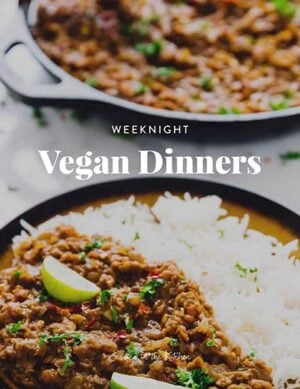
So helpful, thank you! Yours is the first list I have seen of egg substitutes that explains WHY the particular substitute works. Black salt is new to me, but I will be on the lookout for it. Thank you, Jessica.
You’re so welcome Susan!!
I found black salt in the Indian spice section of a Chinese grocery. I’m in a university town with a large international student population and all of our local groceries carry a variety of international spices – but the Chinese groceries are particularly stocked!
??LIMITATIONS on egg replacement?? I’ve read other places that when using egg substitutes such as chia or flax egg, those options only work well if original recipe calls for 1-2 eggs. Not work well for 3 or more eggs. Do you have any info as to efficacy of other listed egg replacer ideas? Do they also have limitations for subbing well for only “x” number of eggs, or can other egg replacers be used for 3 or more eggs? Thinking here of recipes which originally call for 4-6 eggs….
Great question Barb! Can you share the recipe you have in mind? It all depends on the type! But I have for example made a French toast that called for 3 eggs with 3 flax eggs instead (for the batter of course) and it worked great! If you share something specific I can help too!!
This article is very helpful! I know most of this, but it is nice to have it all in one article.
I would like to keep a copy in the kitchen. It would be great if you would add a printable version (ie without the photos).
I have just recently found your site and have added it to my blog feed.
Thanks!
Jan
Hi Jan,
Thank you so much!! Oh great point, I’ll try and work on a printable version!!! So happy it’s so helpful!!
Wow Jessica, you knocked it out of the park on this fabulous list including such great photos. I have been so timid to try anything
other than flax seed.
Now, I am fully armed to cook egg-less thanks to you and your amazing talents to bring it all together for us!
With many thanks and appreciation for the time and energy you gave in sharing!
Thanks so much for your comment Pam!! Yours so incredibly welcome!!
I would love a printable copy too. Thank you so much for your blog. I am new to vegan eating.
Thanks for your feedback Rene! It’s being created!
Hi Rene,
Not sure if you saw – we added in a PDF printable for this! I can’t share links unfortunately but it’s right before the last paragraph the recipe!
Hi Jessica.
Where do you get the chart that you can print out to follow for the best egg substitute for whatever you are trying to make.
Thank you!!
Hi Ramona,
You can download it here! Hope this helps.